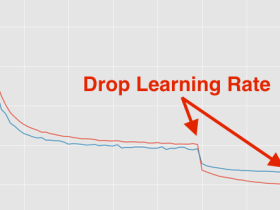#LeNet 定义结构方式1 事实上LeNet被提出时,并没有用到最大池化与ReLU激活函数
import torch
import torch.nn as nn
from torch import functional as F
class Net(nn.Module):
def __init__(self):
super(Net,self).__init__()
self.conv1=nn.Conv2d(3,6,5)
self.conv2=nn.Conv2d(6,16,5)
self.fc1=nn.Linear(16*5*5,120)
self.fc2=nn.Linear(120,84)
self.fc3=nn.Linear(84,10)
def forward(self,x):
x=F.max_pool2d(F.relu(self.conv1(x)),(2,2))
x=F.max_pool2d(F.relu(self.conv2(x)),2)
x=x.view(x.size()[0],-1)
x=F.relu(self.fc1(x))
x=F.relu(self.fc2(x))
x=self.fc3(x)
return x
net=Net()
print(net)
#LeNet 定义结构方式2 事实上LeNet被提出时,并没有用到最大池化与ReLU激活函数
import torch
import torch.nn as nn
class Net(nn.Module):
def __init__(self):
super(Net,self).__init__()
self.features=nn.Sequential(
nn.Conv2d(3,6,5),
nn.ReLU(),
nn.MaxPool2d(2,2),
nn.Conv2d(6,16,5),
nn.ReLU(),
nn.MaxPool2d(2,2)
)
self.classifier=nn.Sequential(
nn.Linear(400,120),
nn.ReLU(),
nn.Linear(120,84),
nn.ReLU(),
nn.Linear(84,10)
)
def forward(self,x):
x=self.features(x)
x=x.view(x.size()[0],-1)
x=self.classifier(x)
return x
net=Net()
print(net)#LeNet 定义结构方式3 事实上LeNet被提出时,并没有用到最大池化与ReLU激活函数
import torch
import torch.nn as nn
class Net(nn.Module):
def __init__(self):
super(Net,self).__init__()
layer1=nn.Sequential()
layer1.add_module('conv1',nn.Conv2d(3,6,5))
layer1.add_module('relu1',nn.ReLU(True))
layer1.add_module('pool1',nn.MaxPool2d(2,2))
self.layer1=layer1
layer2=nn.Sequential()
layer2.add_module('conv2',nn.Conv2d(6,16,5))
layer2.add_module('relu2',nn.ReLU(True))
layer2.add_module('pool2',nn.MaxPool2d(2,2))
self.layer2=layer2
layer3=nn.Sequential()
layer3.add_module('fc1',nn.Linear(400,120))
layer3.add_module('fc_relu1',nn.ReLU(True))
layer3.add_module('fc2',nn.Linear(120,84))
layer3.add_module('fc_relu2',nn.ReLU(True))
layer3.add_module('fc3',nn.Linear(84,10))
self.layer3=layer3
def forward(self,x):
conv1=self.layer1(x)
conv2=self.layer2(conv1)
fc_input=conv2.view(conv2.size(0),-1)
fc_out=self.layer3(fc_input)
return fc_out
net=Net()
print(net)编译环境为Jupyter,运行结果可见:文章源自联网快讯-https://x1995.cn/3244.html
 文章源自联网快讯-https://x1995.cn/3244.html
文章源自联网快讯-https://x1995.cn/3244.html
 文章源自联网快讯-https://x1995.cn/3244.html
文章源自联网快讯-https://x1995.cn/3244.html
 文章源自联网快讯-https://x1995.cn/3244.html
文章源自联网快讯-https://x1995.cn/3244.html
文章源自联网快讯-https://x1995.cn/3244.html
三种搭建方式都用在了CIFAR-10数据集上,迭代训练了10次,最后的准确度都基本差不多,个人喜欢第二种搭建方式。文章源自联网快讯-https://x1995.cn/3244.html
继续阅读










评论